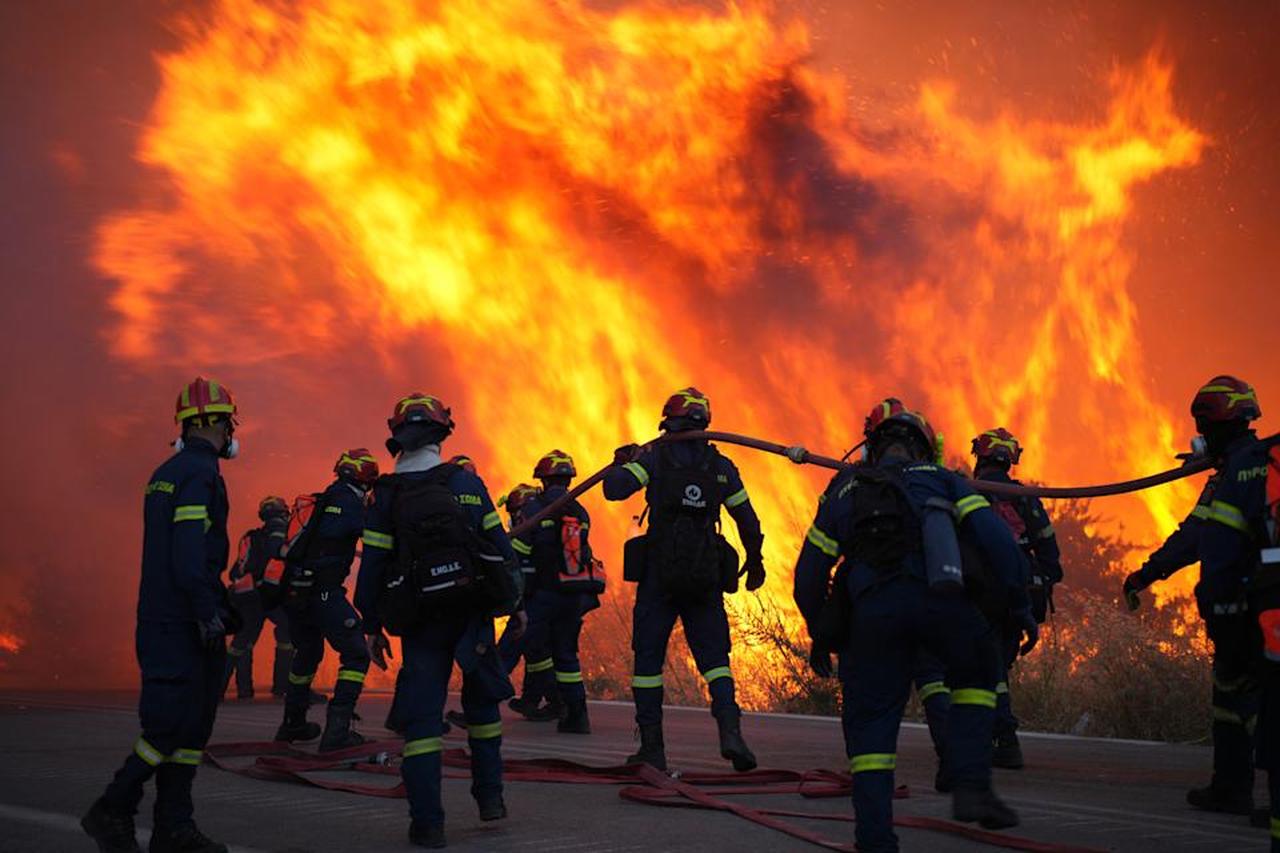
A large wildfire continued to burn for a third consecutive day on the Greek island of Chios, located just across from Türkiye’s Cesme peninsula in the Aegean Sea. One of the five original fire fronts remains active and is advancing toward the island’s southern mastic-producing villages, raising serious concerns among local residents. Strong northerly winds have been pushing the flames into forested areas rich in mastic trees—a key element of Chios’s economy and cultural heritage.
According to local media, the fire initially broke out in the area of Agios Georgios Sykousis and has since spread over a vast area. On Tuesday morning, Greece’s Civil Protection Service issued another emergency message through number 112, advising residents of the village Vessa to evacuate and head toward the nearby settlement of Armolia.
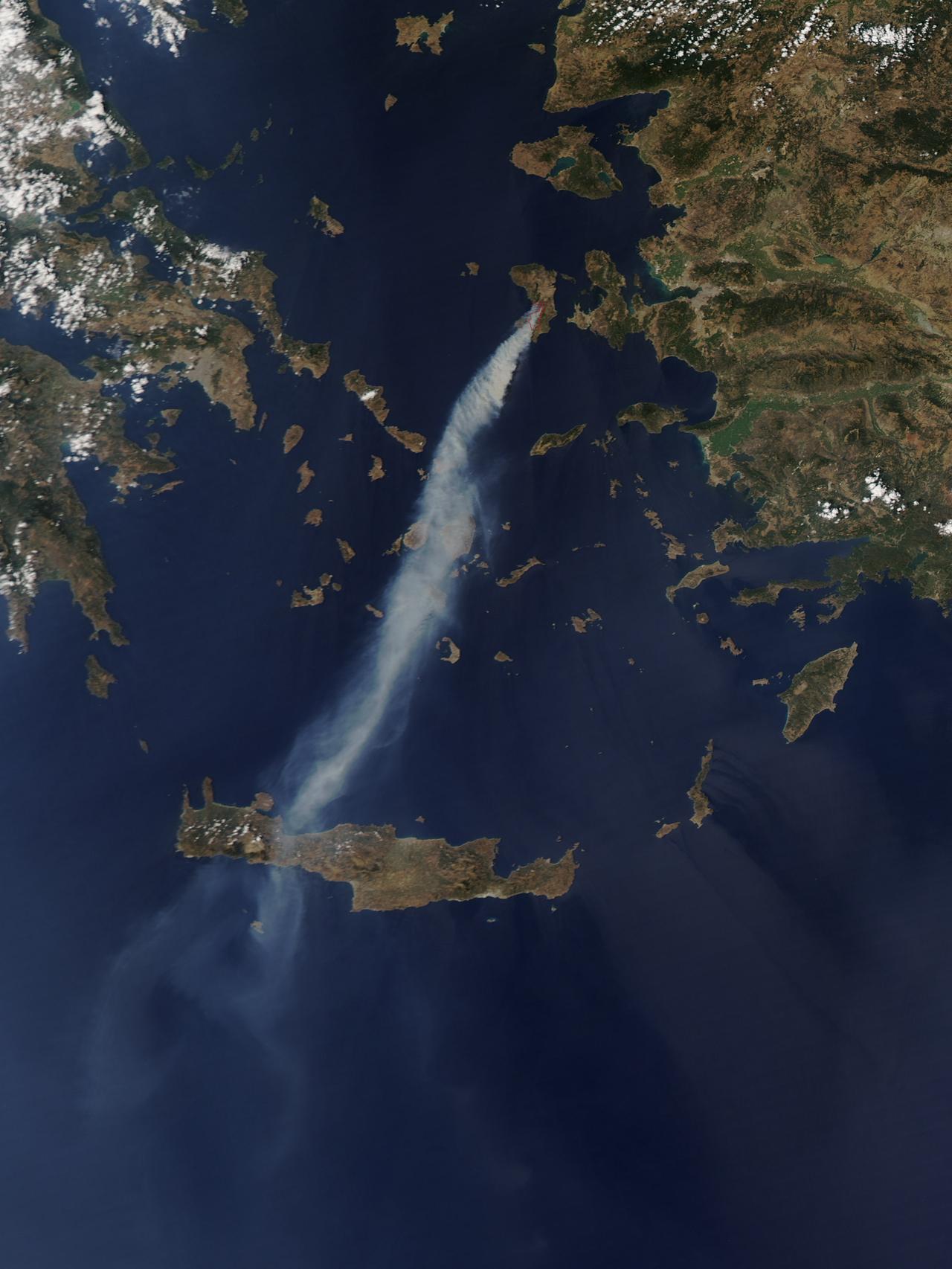
Efforts to contain the fire have mobilized both state agencies and local communities. The president of the Chios Mastic Growers Association, Giorgos Toumbos, stated that the region was on high alert, with widespread community involvement. He referred to the devastating fire of 2012 that swept from the island’s center to the sea, severely damaging mastic groves in the southern region..
“This is something we’ve been through before,” Toumbos said. “The fire has already reached Agios Georgios and now threatens Vessa and Lithi—the first mastic villages in its path. It is critical that firefighters stop the fire before nightfall, because conditions worsen drastically after dark.”
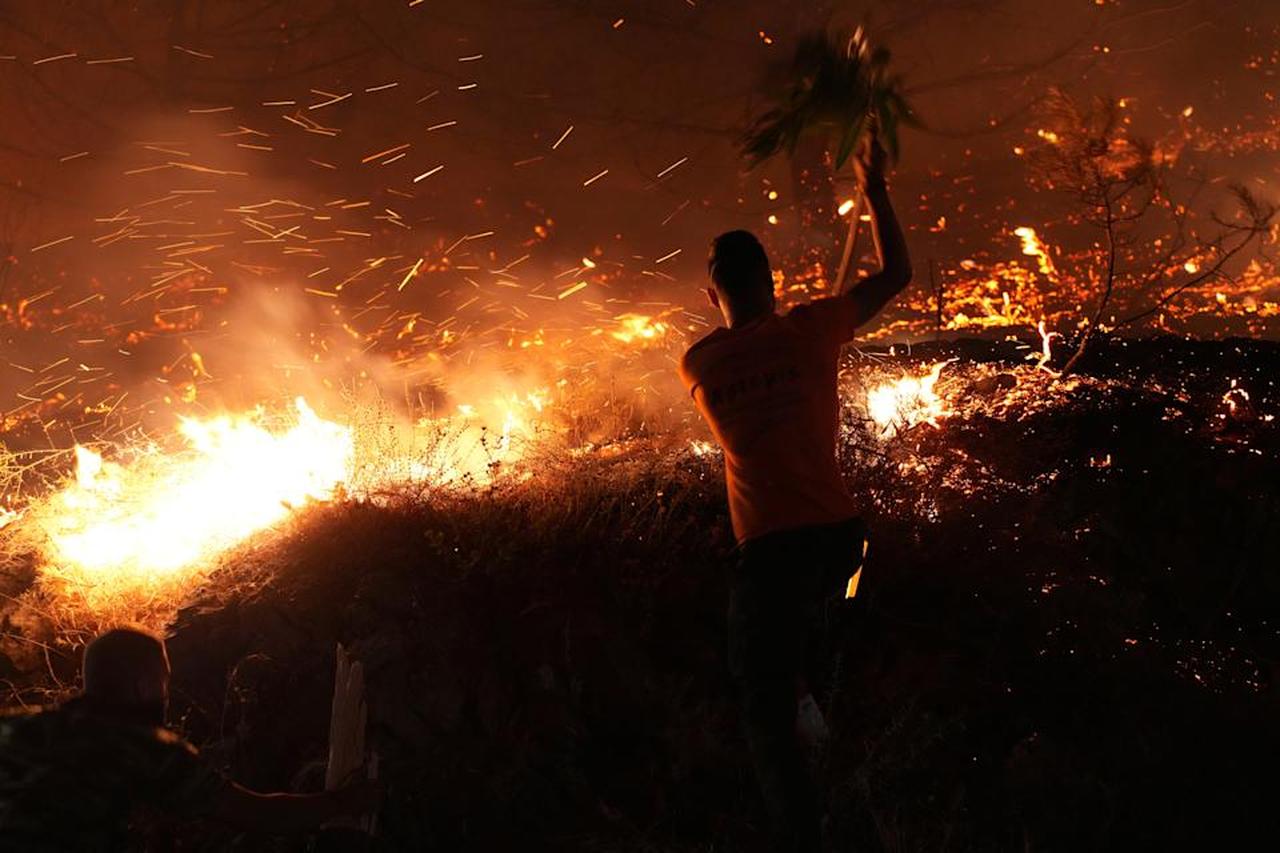
According to local officials, the blaze intensified on Sunday due to powerful winds reaching 7–8 on the Beaufort scale and the area’s difficult terrain. The smoke from the fires was so extensive that it traveled over 210 kilometers, reaching as far as Kimolos island, as confirmed by satellite data analyzed by the Greek weather service Meteo.gr.
On Sunday, three separate forest fires broke out in different parts of Chios: Kofinas, Agia Anna, and Agios Makarios Vrontados. Another fire erupted just after midnight in the Agios Markos area, followed by a fifth outbreak early Monday morning in Leptopoda (Agiasmata) in the island’s north, far from the other fire fronts. By late Monday, the fire at Leptopoda was reportedly under control.
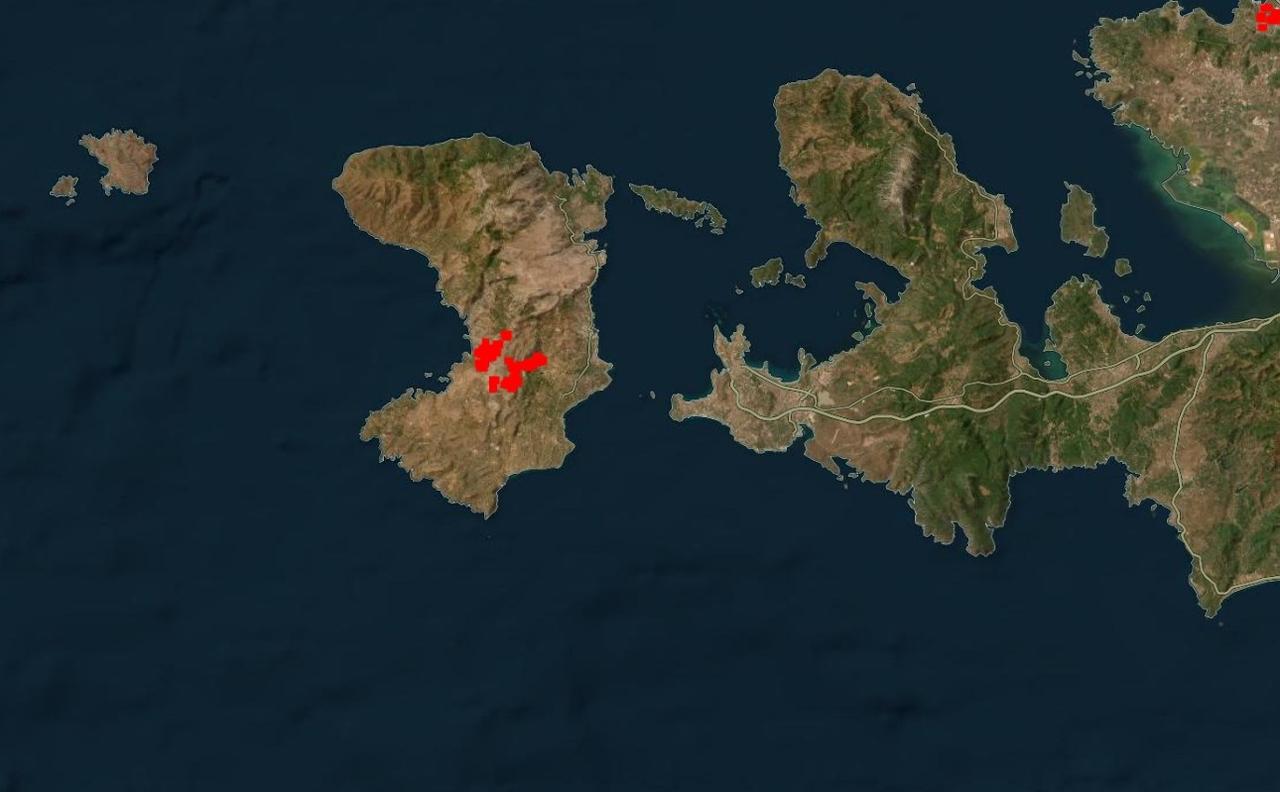
Due to the proximity of fire fronts to populated areas, authorities repeatedly used the 112 emergency alert system to advise evacuations. On Monday alone, messages were sent to residents of Leptopoda, Agios Georgios Sykousis, Dafnonas, Agia Paraskevi Karyon, Vessa, Lithi, Elata, and Armolia. In total, more than 25 settlements received evacuation notices.
Despite these threats, local authorities reported no confirmed damage to homes as of Monday afternoon. Chios mayor Giannis Malafis emphasized that while some villages were threatened, no destroyed residences had been officially recorded, though he noted that isolated damages could not be ruled out.
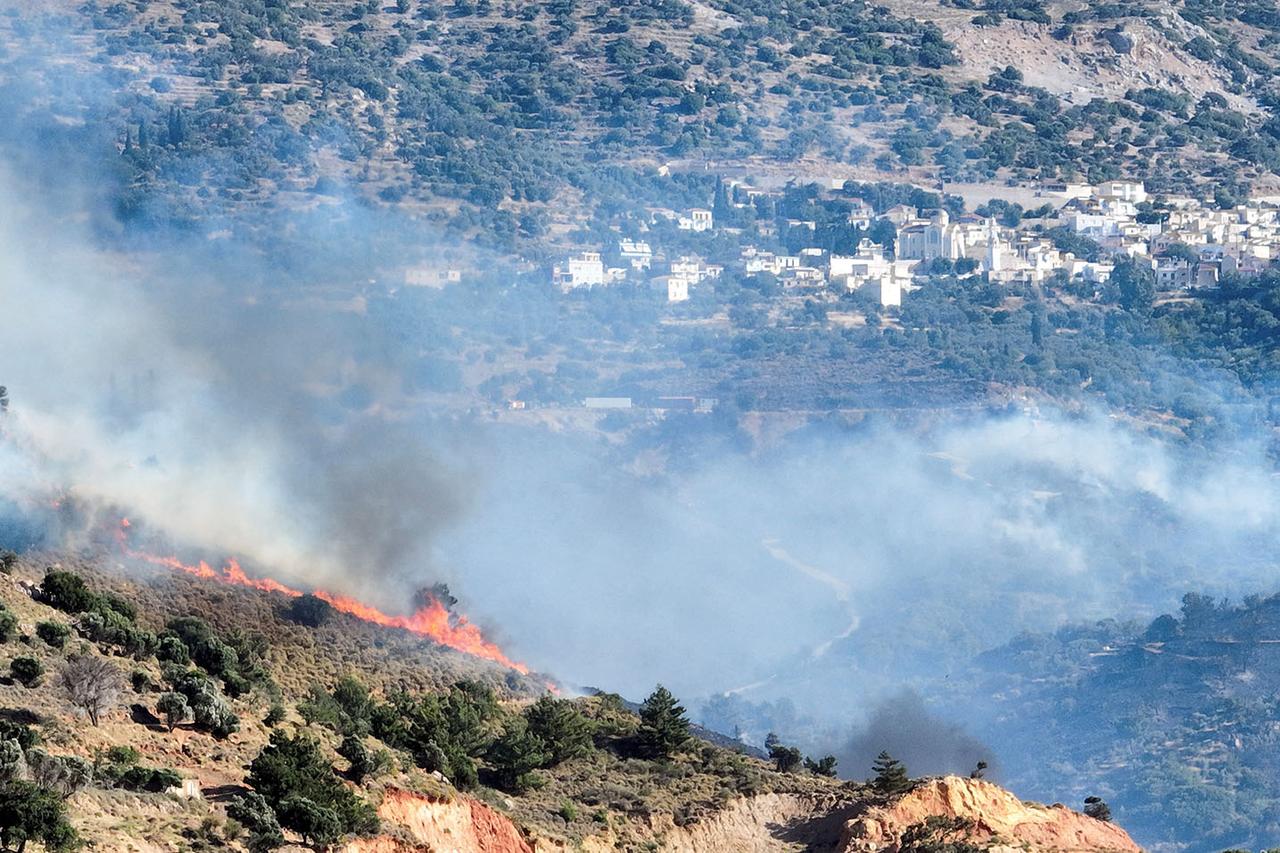
As firefighting efforts continued, a team from Greece’s Fire Investigation Directorate (DAEE), in collaboration with the Hellenic Police’s state security division, arrived on the island to look into the cause of the fires.
Firefighting reinforcements were deployed throughout Tuesday. A total of 190 firefighters with 11 specialized forest firefighting units and 38 vehicles were operating in the area in the morning, with an additional 170 personnel and 30 vehicles expected by the end of the day. Aerial support included 13 helicopters and four Canadair aircraft. Ground operations were also supported by the Greek Army and local authorities, which provided water tankers and heavy machinery.
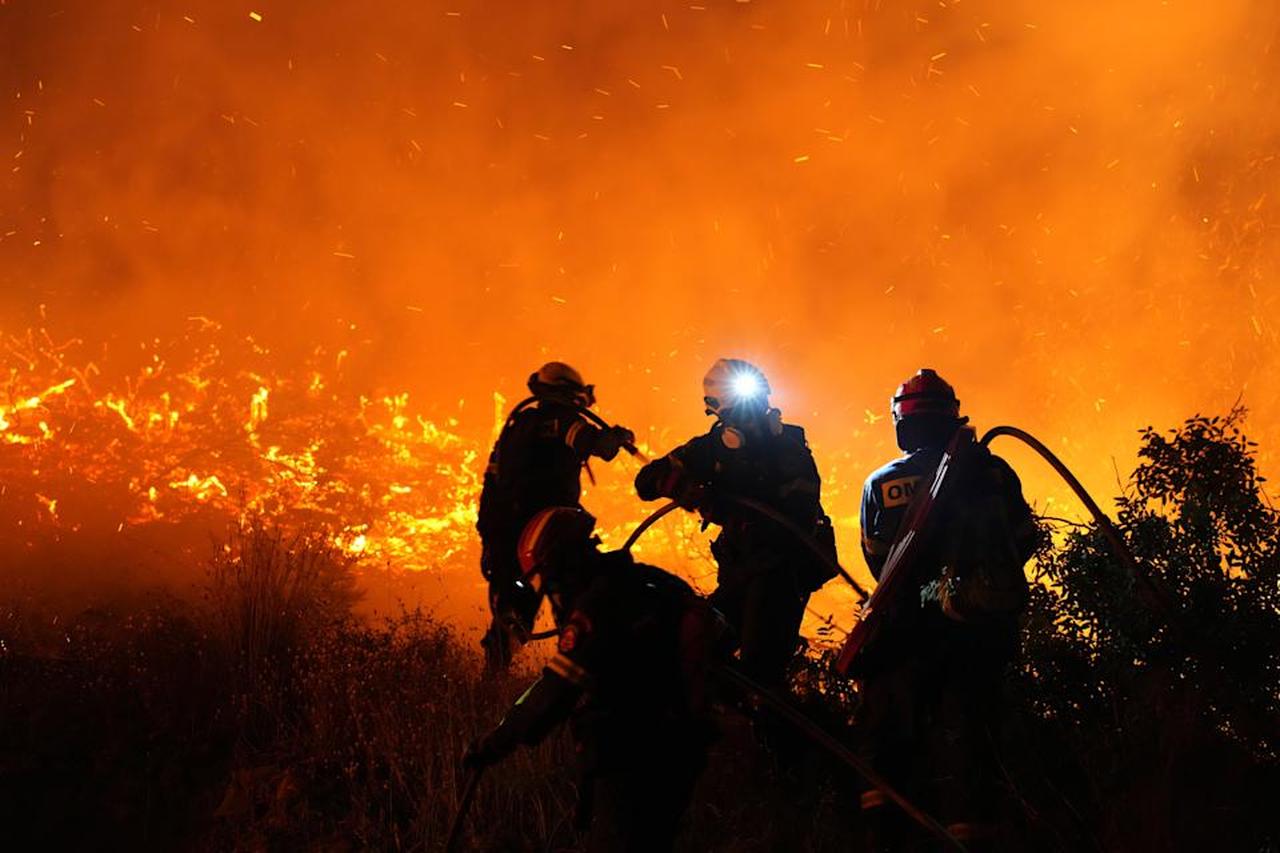
The Greek Minister of Climate Crisis and Civil Protection Giannis Kefalogiannis arrived on the island via military aircraft, accompanied by the general secretary of Civil Protection. In response to the scale of the disaster, the Chios municipality was officially declared to be in a state of emergency until July 22, allowing for immediate response measures to be activated.
Meanwhile, fire meteorological data provided by the National Observatory of Athens (NOA) highlighted the challenging conditions in central Chios. Northerly winds of 5–6 on the Beaufort scale, along with low moisture in dry vegetation, created an environment ripe for the fire’s rapid spread.
Authorities and local residents alike remain focused on preventing the fire from advancing into the vital mastic-producing areas, hoping to avoid a repetition of the catastrophic events of 2012.